Pickled daikon radish, a staple in Asian cuisine, is celebrated for its crisp texture, tangy flavor, and versatility. Whether served as a side dish, added to salads, or paired with rice bowls, properly pickled daikon can elevate any meal. Achieving the perfect balance of crunch, acidity, and sweetness requires attention to detail, from selecting the freshest radishes to mastering the brine ratio. This guide explores traditional and modern methods to help you create pickled daikon that bursts with flavor and retains its satisfying crunch.
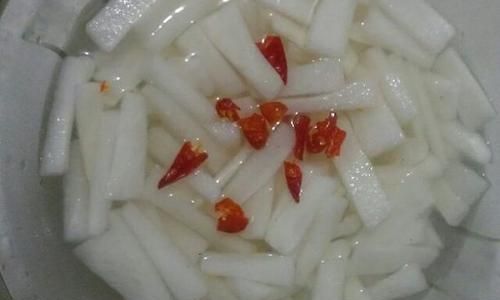
Understanding Daikon Radish: The Foundation of Great Pickles
Daikon (Raphanus sativus var. longipinnatus) is a mild, white radish native to East Asia. Its elongated shape, crisp flesh, and subtle peppery taste make it ideal for pickling. When choosing daikon for pickling, opt for firm, unblemished specimens with vibrant green tops (if attached). Size matters too—medium radishes (about 8–10 inches long) strike the best balance between tenderness and flavor. Avoid overly large or woody daikon, as they may develop a bitter aftertaste or fibrous texture during pickling.
Preparation: Cleaning, Cutting, and Salting
The first step in pickling daikon is thorough preparation. Begin by washing the radish under cool water to remove dirt. Trim the greens, leaving a small stub to prevent the radish from drying out. Peel the skin using a vegetable peeler or knife, as the outer layer can become tough during pickling.
Cutting Techniques
The way you slice daikon affects both its texture and brine absorption. Common cuts include:
- Matchsticks (Julienne): Ideal for even brining and a delicate crunch.
- Half-moons: Sliced crosswise into ¼-inch rounds, perfect for salads or garnishes.
- Wedges: Quartered lengthwise for a heartier bite.
For optimal crunch, aim for uniform thickness—this ensures even pickling. Thicker slices may remain too firm, while thin ones risk becoming soggy.
Salting (Optional but Recommended)
Salting daikon before pickling draws out excess moisture, preventing a watery brine and enhancing crispness. Toss sliced daikon with 1–2 tablespoons of kosher salt per pound of radish, then let it rest for 30–60 minutes. Rinse thoroughly under cold water and pat dry to remove salt residue. This step is particularly crucial for quick pickles, as it jumpstarts the dehydration process.
The Brine: Balancing Flavors
The brine is the soul of pickled daikon. A well-formulated brine balances acidity, sweetness, and saltiness while complementing the radish’s natural flavor.
Classic Brine Recipe
- Ingredients (for 1 pound of daikon):
- 1 cup rice vinegar (or white vinegar for a sharper taste)
- ½ cup water
- 2–3 tablespoons sugar (adjust to taste)
- 1 tablespoon kosher salt
- Optional add-ins: garlic cloves, ginger slices, chili flakes, or peppercorns
Instructions:
- Combine vinegar, water, sugar, and salt in a saucepan.
- Bring to a simmer over medium heat, stirring until sugar and salt dissolve.
- Remove from heat and cool completely before adding to the radish.
Variations to Explore:
- Spicy: Add 1–2 teaspoons of red pepper flakes or sliced fresh chili.
- Savory: Include a bay leaf, mustard seeds, or dill sprigs.
- Sweet: Increase sugar to ¼ cup and add a cinnamon stick.
Pickling Methods: Quick vs. Fermented
Pickled daikon can be made using two primary methods: quick pickling (refrigerator pickles) and fermentation. Each offers distinct advantages.
Quick Pickling (Refrigerator Method)
Best for immediate use, quick pickles require no canning equipment and retain maximum crunch.
- Process:
- Pack salted, dried daikon into a clean jar.
- Pour cooled brine over the radish, ensuring it’s fully submerged.
- Seal the jar and refrigerate for at least 2 hours (ideally overnight) before serving.
- Shelf Life: 2–3 weeks in the refrigerator.
Fermented Pickling (Lacto-Fermentation)
Fermentation introduces beneficial probiotics and deepens flavor over time.
- Process:
- Combine salted daikon with 2% brine (20 grams salt per 1 liter water).
- Transfer to a sterilized jar, leaving 1 inch of headspace.
- Weigh down the radish with a fermentation weight or a cabbage leaf to keep it submerged.
- Cover with a lid and ferment at room temperature (60–70°F) for 3–7 days.
- Taste daily; when the flavor pleases you, transfer to the refrigerator.
- Shelf Life: Several months in the refrigerator.
Key Tips for Success:
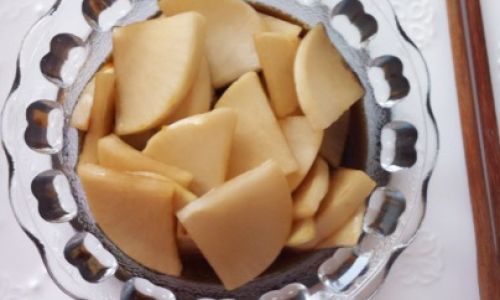
- Use filtered water to avoid chlorine, which can inhibit fermentation.
- Check for scum daily during fermentation and skim if needed.
- Never use iodized salt, as it can discolor the radish.
Flavor Pairings and Creative Twists
While classic pickled daikon is delicious on its own, experimenting with flavors can yield exciting results.
Asian-Inspired Combinations:
- Sesame-Ginger: Add 1 tablespoon toasted sesame oil and 1 teaspoon grated ginger to the brine.
- Miso-Marinated: Whisk 1 tablespoon white miso into the brine before pickling.
- Umami-Rich: Include a strip of kombu (dried kelp) in the jar.
Global Influences:
- Mexican-Style: Mix in sliced jalapeños, cilantro, and a splash of lime juice.
- Mediterranean: Add sliced carrots, oregano, and a pinch of coriander seeds.
Troubleshooting Common Issues
Even experienced picklers encounter hiccups. Here’s how to fix them:
- Mushy Texture: Over-pickling or insufficient salting. Reduce brining time next batch.
- Cloudy Brine: Normal in fermentation; scum is harmless if skimmed daily.
- Bland Flavor: Add more vinegar, salt, or sugar to taste.
- Mold: Discard the batch; ensure proper submersion and cleanliness.
Serving Suggestions and Storage
Pickled daikon’s versatility shines in countless dishes:
- Rice Bowls: Top with a fried egg and sesame seeds.
- Sandwiches: Layer with pork belly or grilled chicken.
- Salads: Toss with cucumbers, mint, and a drizzle of chili oil.
- Appetizers: Serve alongside dumplings or spring rolls.
Store pickled daikon in airtight jars in the refrigerator. For fermented varieties, burp the jar occasionally to release pressure.
The Cultural Significance of Pickled Daikon
Pickled daikon holds a special place in Asian culinary traditions. In Japan, takuan—fermented daikon dyed bright yellow—is a beloved accompaniment to meals. Korean danmuji adds vibrant color to bibimbap, while Vietnamese củ cải chua enriches bánh mì sandwiches. These pickles reflect a deep appreciation for preserving seasonal produce and enhancing digestion through fermentation.
Health Benefits of Pickled Daikon
Beyond its culinary appeal, pickled daikon offers nutritional perks:
- Probiotics: Fermented varieties boost gut health.
- Vitamin C: A single serving provides a portion of your daily needs.
- Low Calorie: Ideal for weight-conscious diets.
However, moderation is key due to sodium content. Rinse fermented daikon before eating to reduce salt.
Conclusion: Mastering the Art of Pickling
Pickled daikon is a testament to the magic of simple ingredients transformed by patience and precision. Whether you prefer the instant gratification of quick pickles or the complex depth of fermentation, this guide equips you with the knowledge to craft radishes that dazzle the palate. Experiment with flavors, embrace tradition, and savor the crunch—your journey to pickling perfection starts here.
Word Count: 1,520+
This comprehensive guide ensures your pickled daikon achieves the ideal balance of texture, flavor, and visual appeal. Happy pickling!
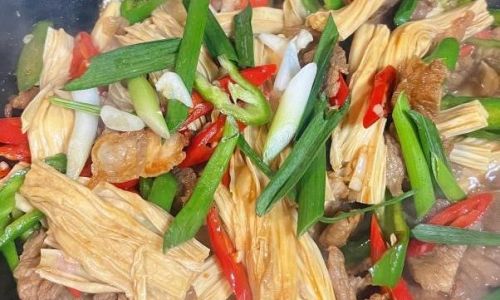
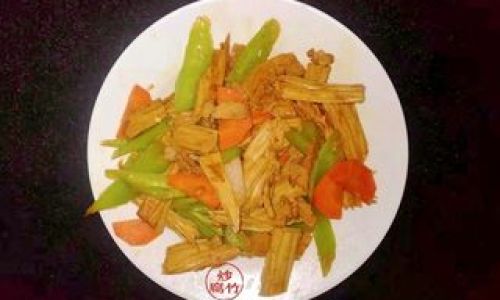
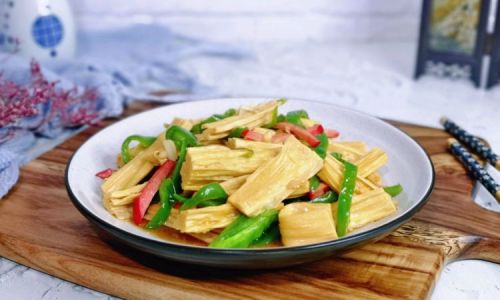
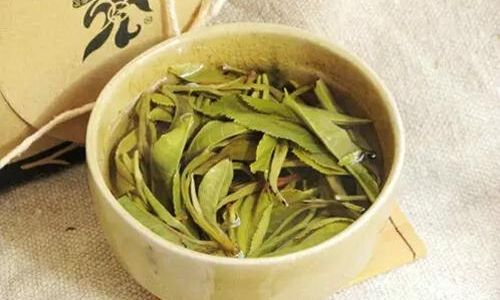
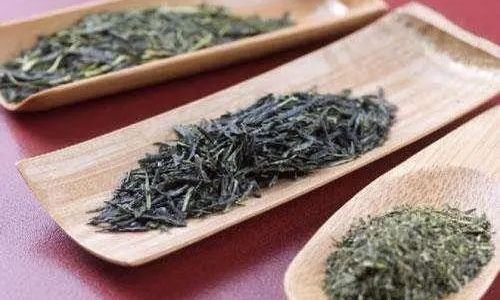
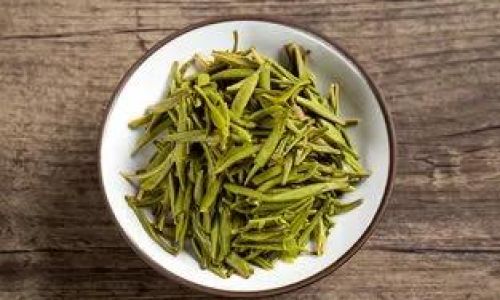
0 comments